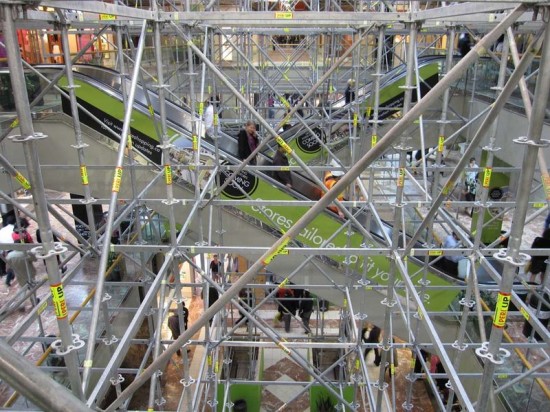
On my recent trip to Calgary, Canada, I came upon the “+15”, an intricate network of more than 57 enclosed bridges elevated approximately 15 feet above street level that connect at least 100 buildings in downtown. My exploration led me into an active construction site of four stories of scaffolding within a shopping mall dotted with busy construction workers, passer-bys, and shoppers. The site turned out to be one of the three shopping malls collectively known as “The Core” which is going through major renovation while pursuing certification for LEED-Commercial Interiors (LEED-CI).
CORE – Calgary Eaton Centre/TD Square is a multi-level shopping complex spread among three high rise office buildings which span three city blocks in downtown Calgary. It is connected by thoroughfares at multiple levels lined with retail stores, cafes, restaurants, medical offices, service providers, public seating areas, and the 2.5 acre Devonian Gardens. At the roof level, it will be connected by the “world’s largest seamless skylight” sized at 90’ wide and 750’ long.

While walking through the malls and going up the escalators surrounded by construction activities, I was dazzled by well designed and informative signage, wires hanging from exposed structural ceilings, and constant flows of pedestrian traffic in this urban environment. As a construction manager, I was amazed at the complex logistical challenges that the project required, especially with most businesses remaining open through this chaotic yet coordinated construction schedule. I later found that the website of the CORE – Calgary Eaton Centre/TD Square shares daily updates of construction activities by areas and floors, as well as store closings, openings, and re-locations!
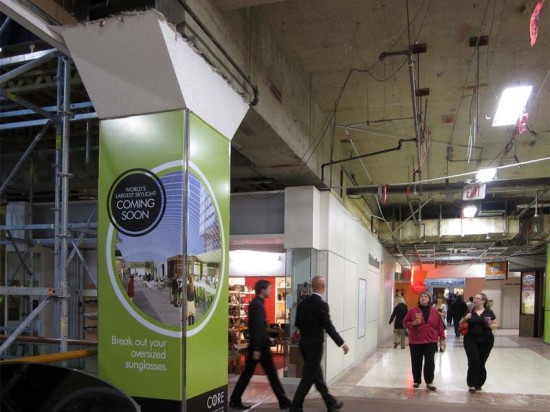

The CORE aims to improve its interior environment in a responsible, green manner which is commendable. It provides a backdrop for an existing, highly utilized elevated urban streetscape during business hours and definitely provides protection from the harsh weather in Calgary. One can almost live in it and not leave the +15 and its 10 mile circulation of paths. For fun, check out Waydowntown, winner of the Best Canadian Feature Film at the 2000 Toronto International Film Festival, which featured three men who wagered on which of them could stay inside the +15 the longest.
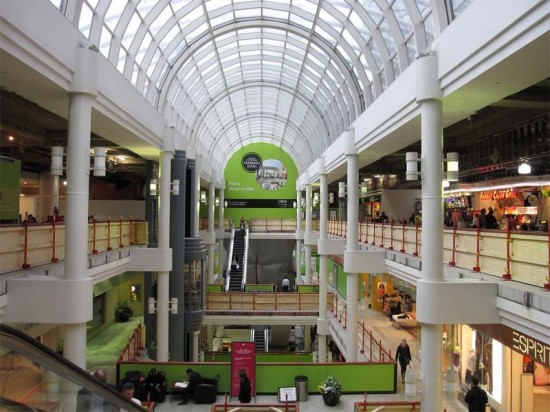
At first glance, I find that the elevated network of +15 is a creative solution which is very similar to the underground networks of malls and subway lines in many of Asia’s dense urban cities. It provides a fairly comfortable alternative for people to conduct their daily activities in the middle of winter. Can the success of an elevated streetscape replace the traditional at-grade streetscape?
From an urban planning perspective, as my colleague Jake Wegmann pointed out, if urban vitality is shifted into the buildings and the streets are empty except for vehicles, is that really sustainable city planning? How can one solve urban planning and bring life to the streets when it snows almost nine months out of the year in a place like Calgary?


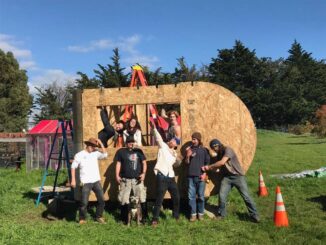
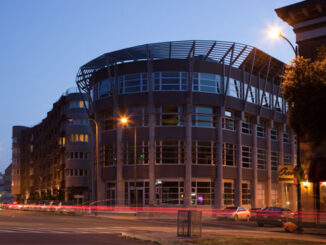
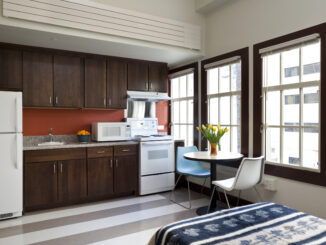
Be the first to comment